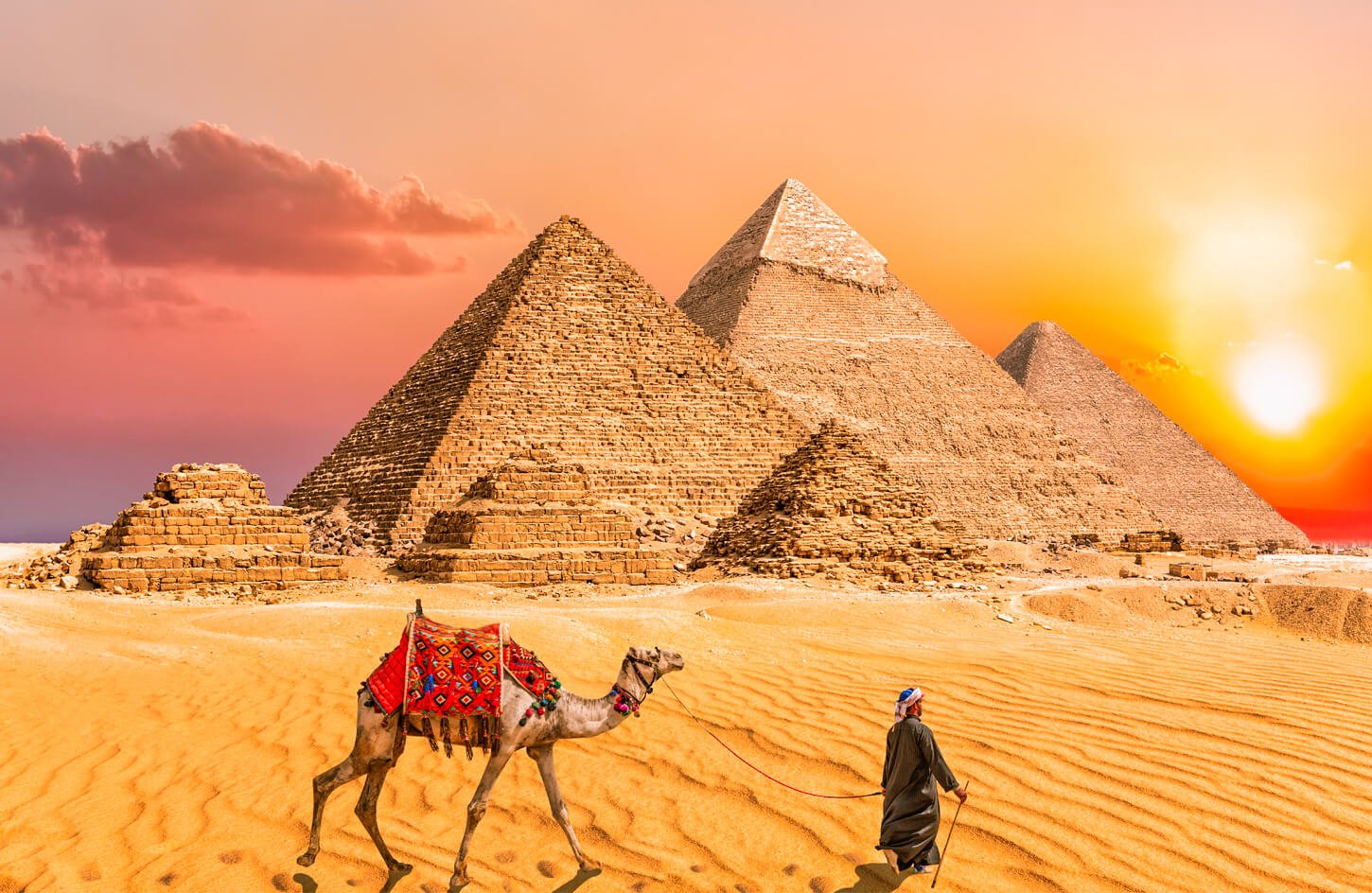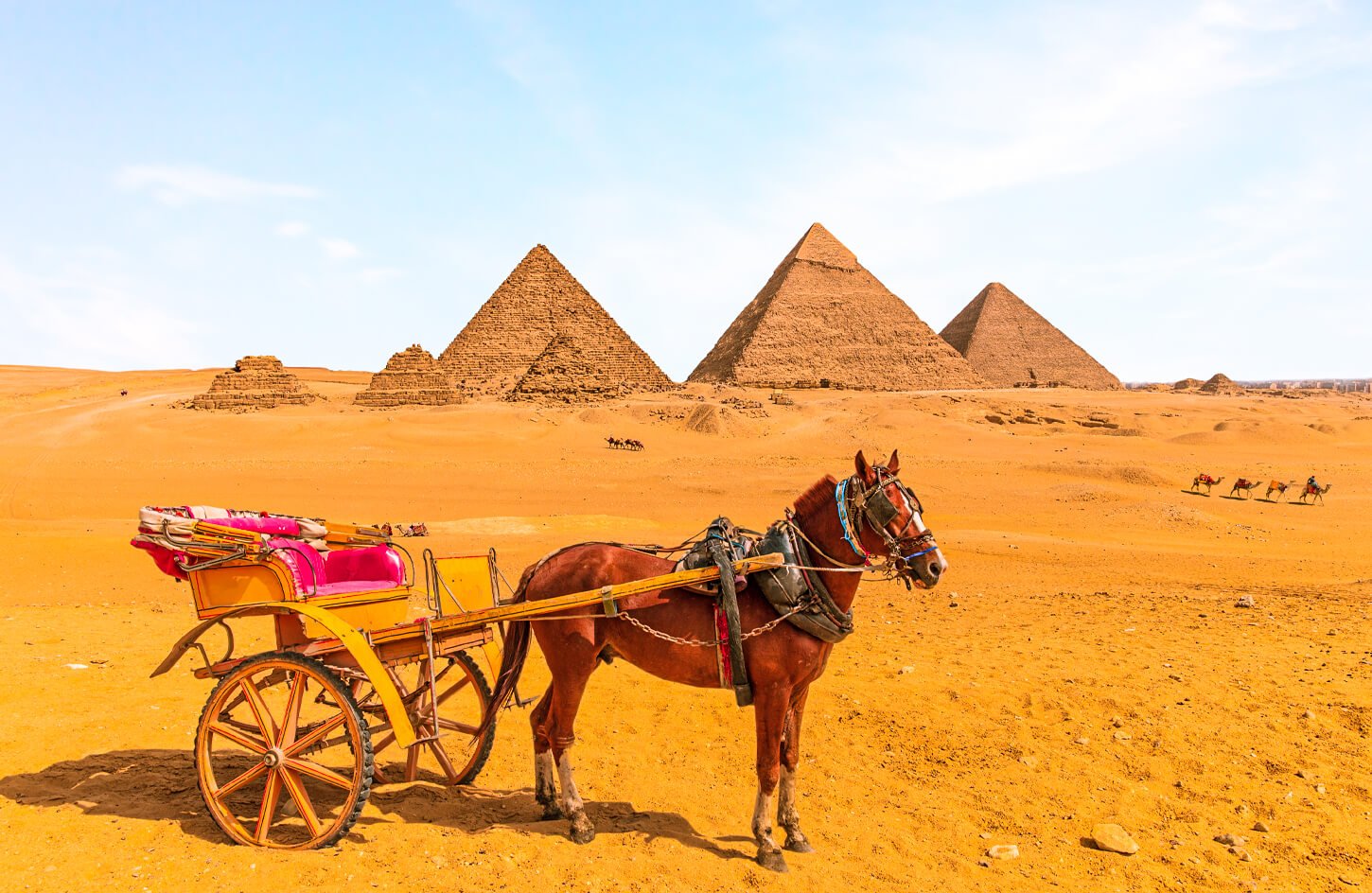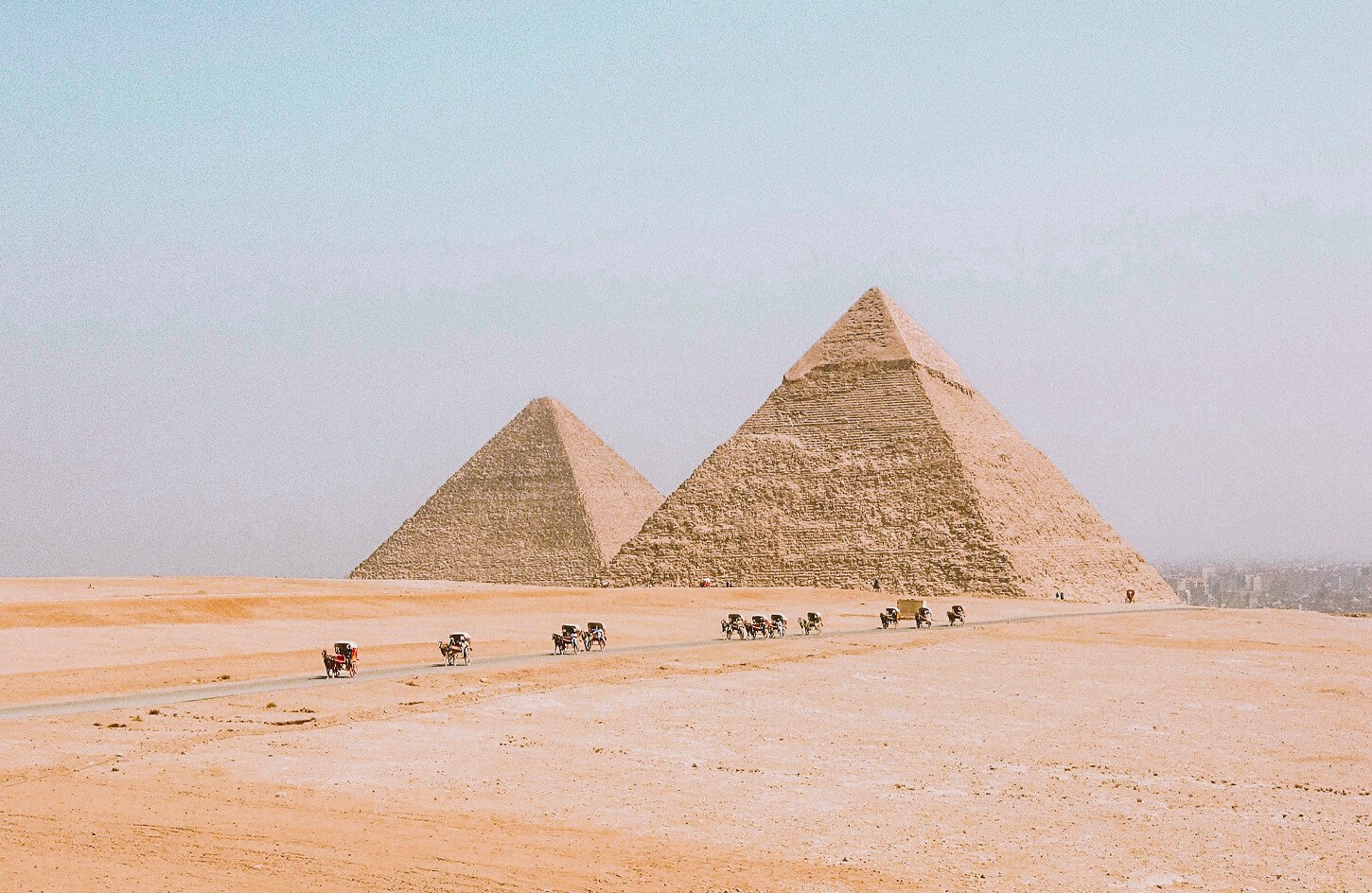The Great Pyramids of Giza, located on the outskirts of modern-day Cairo, Egypt, are among the world’s most iconic and mysterious ancient structures. These magnificent monuments have stood the test of time and continue to captivate the imagination of people from all corners of the globe. This article will delve into the rich history, awe-inspiring architecture, enigmatic secrets, and cultural significance of the Great Pyramids.
The Great Pyramids of Giza are a testament to the ancient Egyptians’ engineering prowess and ambition. Built as tombs for the pharaohs during the Old Kingdom period of ancient Egypt, they provide a window into the civilization’s past glory and advanced architectural techniques.
History of the Great Pyramids of Giza
The construction of the Great Pyramids began around 4,500 years ago during the reign of Pharaoh Khufu, also known as Cheops. It took an estimated 20 years and thousands of skilled laborers to complete the colossal structures. Over the centuries, subsequent pharaohs continued the pyramid-building tradition, resulting in around 80 pyramids in Egypt.

Construction and Architecture
The construction of the pyramids was a remarkable feat, considering the limited technological resources available at the time. The architects and builders meticulously planned and executed every aspect of the pyramids, employing sophisticated techniques to align them with celestial bodies and ensure their longevity.
The pyramids were constructed using massive limestone blocks, quarried, and transported from nearby sites. The precise placement of these blocks, combined with an inner network of passageways and chambers, allowed the pyramids to withstand the test of time.
The Three Main Pyramids
The Great Pyramids of Giza consist of three main pyramids, each associated with a different pharaoh.
Khufu’s Pyramid
Khufu’s Pyramid, also known as the Great Pyramid, is the largest and oldest of the three. It stood approximately 138 meters tall and was the tallest man-made structure in the world for over 3,800 years. The construction techniques employed in Khufu’s Pyramid remain fascinating and debated among scholars.
Khafre’s Pyramid
Khafre’s Pyramid, built by Pharaoh Khafre, is slightly smaller than Khufu’s Pyramid but appears taller due to its elevated location. It is known for its prominent Sphinx, a colossal statue with the body of a lion and the head of a pharaoh, which guards the entrance to the complex.
Menkaure’s Pyramid
Menkaure’s Pyramid, ‘s smallest of the three main pyramids, was constructed by Pharaoh Menkaure. It showcases intricate architectural details and is flanked by smaller and queen pyramids.
The Sphinx
Adjacent to Khafre’s Pyramid stands the enigmatic Sphinx, a limestone statue believed to represent the pharaoh Khafre himself. The Sphinx has fascinated people for centuries with its enigmatic smile and imposing presence. It is surrounded by legends and theories about its purpose and hidden chambers.

What is the Purpose of the Giza Pyramids?
The Great Pyramids of Giza held immense religious and spiritual significance for the ancient Egyptians. They were designed to serve as eternal resting places for the pharaohs, believed to ascend to the heavens and join the gods upon death. The pyramids were filled with treasures, artifacts, and offerings to ensure the pharaoh’s smooth transition into the afterlife.
Secrets and Mysteries
- The Great Pyramids of Giza have long been surrounded by an air of secrecy and intrigue, giving rise to numerous theories and captivating mysteries. These enigmatic structures continue to bewilder researchers, historians, and enthusiasts, offering glimpses into ancient Egypt’s rich past and raising questions that still challenge our understanding today.
- One enduring mystery is the precise construction methods employed by the ancient Egyptians. How could they transport massive limestone blocks from quarries located miles away? What tools and techniques did they utilize to achieve such precise alignments and intricate carvings? Despite ongoing studies and research, some aspects of the construction process remain elusive, leaving room for speculation and wonder.
- Another perplexing question revolves around the purpose of the pyramids’ intricate internal passageways and chambers. While the primary function was to serve as royal tombs, some theorists propose additional hidden purposes. The possibility of undiscovered chambers or secret compartments within the pyramids continues to captivate imaginations. Archaeologists and explorers have made exciting discoveries in recent years, such as the hidden void discovered in the Great Pyramid, using advanced imaging techniques. These findings fuel the hope that these ancient marvels are still waiting to unveil secrets.
- The alignment of the pyramids with celestial bodies adds to their mystique. The precision with which the pyramids are oriented toward specific astronomical features, such as the solstices and certain stars, has led to theories suggesting an advanced knowledge of astronomy by the ancient Egyptians. Some researchers propose that the pyramids were not only monumental tombs but also celestial observatories or even power stations, harnessing the energies of the cosmos.
- The absence of hieroglyphic inscriptions and other explicit records within the pyramids has also given rise to speculation. While the walls of other ancient Egyptian structures are adorned with detailed texts and pictorial representations, the pyramids, particularly their inner chambers, remain relatively bare. This absence of information raises questions about the intended purpose of these sacred spaces and leaves room for alternative interpretations.
- In recent times, ground-penetrating radar and other non-invasive techniques have been employed to explore the pyramids’ interiors without causing damage. These advancements have led to exciting discoveries like hidden chambers and passageways. However, the full extent of what lies beneath the surface of the pyramids remains a tantalizing mystery, awaiting further exploration and technological advancements.
- The secrets and mysteries of the Great Pyramids of Giza continue to fascinate us, encouraging exploration, research, and speculation. They serve as a reminder of the extraordinary achievements of the ancient Egyptians and their enduring legacy. The enigma surrounding these majestic structures only deepens our appreciation for the mysteries still hidden within the sands of time.

Visiting the Giza Pyramids for Tourists
The Great Pyramids of Giza are ancient wonders and popular tourist attractions that draw millions of visitors worldwide each year. People witness these architectural marvels firsthand, immerse themselves in the rich history of ancient Egypt, and experience the awe-inspiring grandeur of the pyramids.
The Giza Plateau, where the pyramids are located, offers visitors a unique opportunity to step back in time and explore the remnants of a once-great civilization. As visitors approach the site, the iconic silhouette of the pyramids against the desert backdrop creates a sense of anticipation and wonder.
Upon arrival, visitors are greeted by the pyramids’ sheer magnitude and intricate details. The monumental structures built thousands of years ago inspire awe and admiration. The precision with which the pyramids were constructed leaves visitors marveling at the ancient Egyptians’ engineering skills and the sheer audacity of their architectural achievements.
One of the highlights of a visit to the pyramids is the chance to venture inside these ancient tombs. While not all of the pyramids are open to the public, there are designated entrances that allow visitors to explore the inner chambers of some pyramids. Stepping into these sacred spaces, visitors can glimpse the complex network of passages and chambers beneath the surface.
Inside the pyramids, visitors can marvel at the hieroglyphic inscriptions, intricate carvings, and burial chambers that once held the pharaohs and their treasures. The sense of history and the realization that these structures have endured for thousands of years create a profound connection to the past and a reverence for the ancient civilization that built them.
The site of the Great Pyramids of Giza offers more than just the pyramids. The complex also includes the majestic Sphinx, a colossal statue with a lion’s body and a pharaoh’s head. The Sphinx stands as a symbol of strength and power, guarding the entrance to the pyramid complex. Visitors can marvel at the intricate details of this iconic statue and learn about the legends and mysteries surrounding it.
Visiting the Great Pyramids of Giza is a transformative experience that leaves a lasting impression on travelers. It allows people to connect with the past, marvel at human ingenuity, and appreciate the timeless beauty of these ancient structures. The pyramids continue to be a testament to the enduring legacy of ancient Egypt and a must-visit destination for anyone seeking a profound cultural and historical journey.

Cultural Impact and Symbolism
The Great Pyramids of Giza hold immense cultural significance for Egypt and the world. They symbolize the ancient Egyptians’ mastery of engineering, complex religious beliefs, and enduring legacy as one of the greatest civilizations in history. The pyramids have inspired countless works of art, literature, and popular culture, leaving an indelible mark on human history.
The Great Pyramids of Giza are a testament to the ancient Egyptians’ architectural brilliance and cultural sophistication. These awe-inspiring structures continue to capture the imagination and curiosity of people worldwide. As we marvel at their grandeur and contemplate their mysteries, the Great Pyramids remain an enduring symbol of human achievement and a tangible link to our distant past.
Conclusion
The Great Pyramids of Giza are eternal guardians of ancient Egypt’s rich history and remarkable achievements. These awe-inspiring structures built thousands of years ago, continue to captivate the imagination of people from all corners of the globe. The pyramids hold a special place in our collective consciousness, from their impressive architecture and enigmatic secrets to their cultural significance and enduring allure.
Visiting the Great Pyramids is an experience that transcends time. As visitors walk in the footsteps of pharaohs, they are transported to a bygone era, where ancient civilizations flourished along the banks of the Nile. The sheer magnitude and precision of the pyramids evoke a sense of wonder and admiration for the ingenuity and craftsmanship of the ancient Egyptians.
Exploring the inner chambers and passageways of the pyramids offers a rare glimpse into the rituals, beliefs, and burial practices of a civilization long gone. Hieroglyphic inscriptions and intricate carvings tell stories of gods, pharaohs, and the journey to the afterlife. Each step deepens the connection to the past, leaving an indelible impression of the grandeur and complexity of ancient Egypt.
Beyond their historical significance, the Great Pyramids of Giza serve as cultural symbols, resonating with people across the globe. They inspire artists, writers, and dreamers, sparking a sense of curiosity and sparking imagination. The pyramids have become icons of human achievement, representing the ingenuity and perseverance of the human spirit.
While the mysteries and secrets of the pyramids continue to intrigue scholars and enthusiasts, their timeless appeal extends beyond academia. They beckon travelers from far and wide, inviting them to witness the marvels of antiquity and discover the wonders of an ancient civilization.
As we stand in awe of the Great Pyramids, we are reminded of the vastness of human history and our place within it. These monumental structures connect us to our roots, reminding us of the enduring legacy of our ancestors and the profound impact they have left on the world.
Visiting the Great Pyramids of Giza is an opportunity to embrace the past, celebrate human achievement, and gain a deeper understanding of the wonders within history and archaeology. It is a journey that enlightens, inspires, and leaves an everlasting imprint on the souls of those fortunate enough to experience its magic.


0 Comment